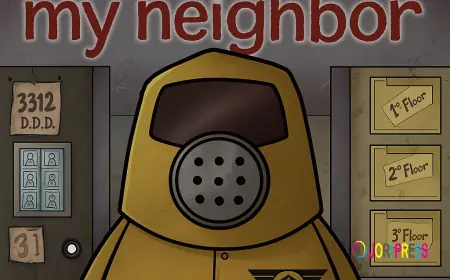Solving a Rubik’s Cube may look intimidating from the outside, but once you understand the structure, patterns, and algorithms behind it, the process becomes surprisingly enjoyable. Whether you’re a complete beginner or someone aiming to improve your speed-solving skills, the foundation always lies in understanding the right algorithms and knowing when to apply them. In this guest post, let’s dive deep into the most essential algorithm sets, Beginner-Friendly Algorithm to solve cube, the CFOP Method, and two powerful PLL algorithms: U-Perm and T-Perm.
By the end, you’ll have a clear roadmap on how to approach cube-solving step-by-step and how to progress from basic techniques to pro-level methods.
1. Beginner-Friendly Algorithms: The Perfect Start for New Cubers
If you are new to the world of cubing, your first goal is to solve the cube without feeling overwhelmed. Beginner methods are specifically designed for this—they use simple logic and concise algorithms that anyone can memorize with a little practice.
Why beginner methods work so well
Beginner algorithms focus on the Layer-by-Layer (LBL) approach. You solve one face at a time, gradually building towards the full cube. There’s no need for complex pattern recognition or long-term memorization. This method helps you:
- Understand cube notation
- Develop muscle memory
- Learn how pieces move.
- Build confidence for advanced systems.
Key beginner algorithms you’ll learn
Most beginner methods consist of 3–4 essential algorithm sets, such as:
- White Cross Formation
Understanding how to align edge pieces correctly.
- First Layer Corners
A simple R' D' R move sequence is often enough to place corner pieces correctly.
- Second Layer Edges
Algorithms like U R U' R' U' F' U F help insert edge pieces with minimal effort.
- Last Layer Orientation & Permutation
Beginner OLL forms a yellow cross and orients the face using basic sequences.
Beginner PLL helps swap pieces into their correct spots, even if it takes more steps than speed methods.
The beauty of beginner algorithms is that they introduce you to the cube’s mechanics without requiring you to learn dozens of patterns. Once you’re comfortable, you can step into more advanced territory—like CFOP.
2. The CFOP Method: The Gold Standard for Speed Solving
CFOP is the most widely used speed-solving method in the world. It’s the technique favored by pros and world-record setters because of its speed, efficiency, and logical structure. But don’t be intimidated—CFOP can be learned step-by-step, and you don’t have to memorize everything at once.
What is CFOP?
CFOP stands for:
- C – Cross
- F – First Two Layers (F2L)
- O – Orientation of the Last Layer (OLL)
- P – Permutation of the Last Layer (PLL)
Each stage is designed to reduce the number of moves needed and streamline the solving process.
C: The Cross
Instead of simply building a cross like beginners do, CFOP focuses on building the cross efficiently and with fewer rotations.
With practice, solvers can plan their entire cross during the cube inspection time.
F: F2L (First Two Layers)
F2L replaces the long beginner method for the middle layer with pairing corner and edge pieces and inserting them together. This is what makes CFOP so fast—it dramatically reduces the total number of moves.
Newer cubers often start with intuitive F2L, then gradually learn advanced F2L algorithms for tough cases.
O: OLL (Orientation of the Last Layer)
This step is about orienting all last-layer pieces so the top face becomes one solid color.
There are 57 OLL algorithms, but beginners only need a small subset to start. Many solvers first learn 2-Look OLL, which breaks the step into two simpler actions.
P: PLL (Permutation of the Last Layer)
PLL solves the final step—putting every last-layer piece into its correct spot.
There are 21 PLL algorithms in total, but two of the most important and commonly used are the U-Perm and T-Perm, which we’ll discuss shortly.
CFOP might sound like a lot, but you don’t need to learn everything at once. Even knowing a few algorithms can drastically cut your solve time.
3. U-Perm: A Fast and Powerful PLL Algorithm
The U-Perm is one of the most useful PLL algorithms. It allows you to cycle three edge pieces around the top layer. This comes in handy in many CFOP solves because edge cycling is one of the most common last-layer situations.
Why U-Perm is essential
- It's easy to recognize on the cube.
- It’s one of the fastest PLLs to execute
- Even top speedcubers rely on it during solves
- It improves your last-layer efficiency significantly.
Once you master U-Perm, your solves immediately feel cleaner and faster.
4. T-Perm: A Favorite Among Cubers for Good Reason
The T-Perm is another widely-used PLL algorithm. It swaps two corner pieces while cycling two edge pieces—this combination makes it extremely useful and very common during PLL.
Why cubers love the T-Perm
- It’s smooth and fun to execute
- Has great finger-trick potential
- Appears frequently in speed-solves
- Simple to recognize visually
Most cubers learn T-Perm early because it’s powerful, efficient, and extremely satisfying to perform.
5. Building a Smooth Learning Path for Yourself
When learning cube algorithms, the best approach is layered progression:
- Start with beginner-friendly algorithms to understand piece movement.
- Move into CFOP and learn the structure.
- Master intuitive F2L
- Learn 2-Look OLL and 2-Look PLL
- Gradually pick up advanced PLLs like U-Perm and T-Perm.
- Practice, practice, practice. Recognition is as important as execution.
With consistency, these algorithms become second nature, and your cube-solving speed increases without even realizing it.
Final Thoughts
Rubik’s Cube solving looks like magic from the outside, but at its heart, it’s the beautiful combination of logic, patterns, and algorithms. From beginner-friendly sequences to advanced methods like CFOP, U-Pe
rm, and T-Perm, every algorithm teaches you something new about how the cube works with Cubelelo. Whether you want to improve your personal best or simply enjoy solving as a hobby, mastering these algorithms opens the door to a faster, smoother, and more enjoyable cubing journey.

 Like
0
Like
0
 Dislike
0
Dislike
0
 Love
0
Love
0
 Funny
0
Funny
0
 Angry
0
Angry
0
 Sad
0
Sad
0
 Wow
0
Wow
0

















































